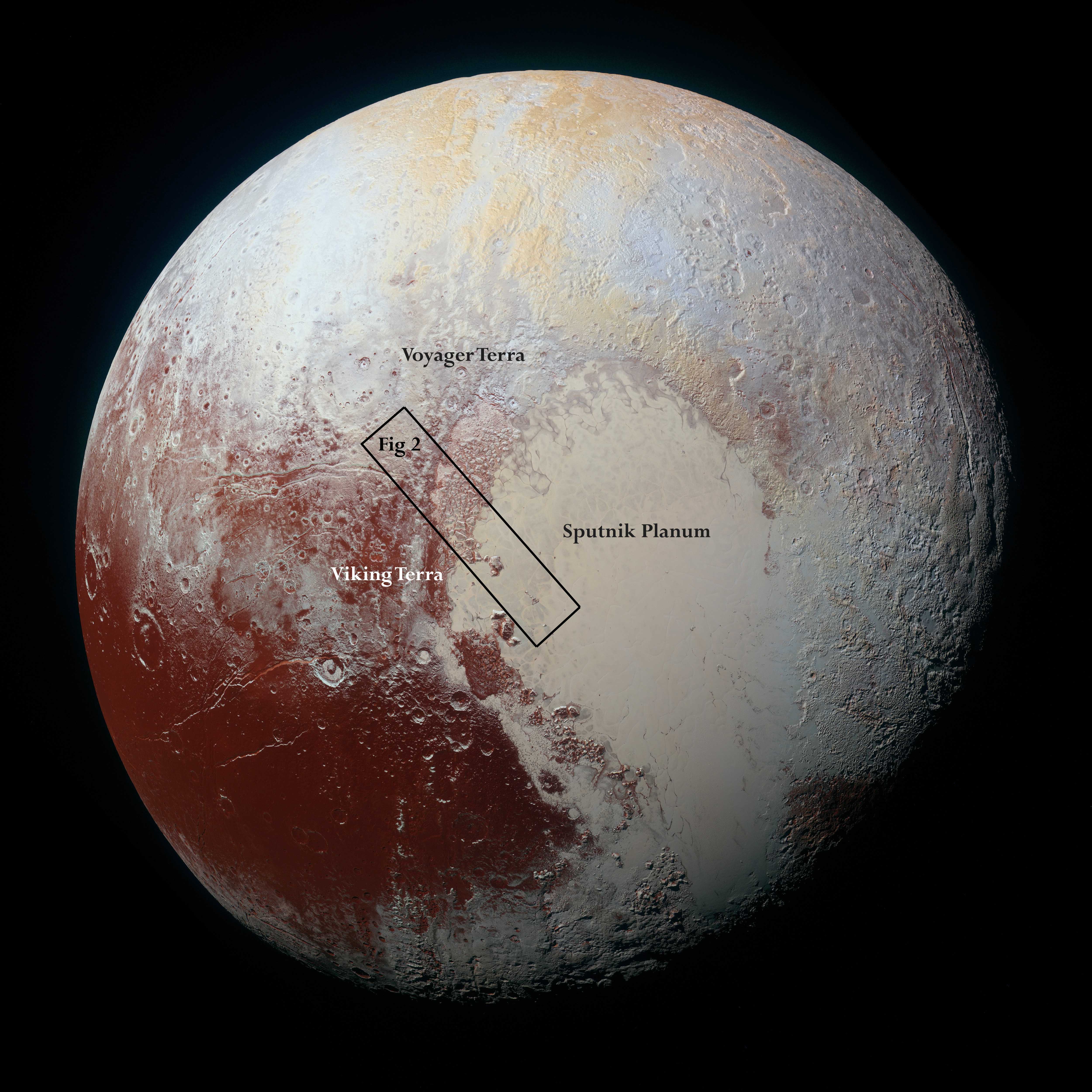Post contributed by C. Adeene Denton, Department of Earth, Atmospheric, and Planetary Sciences, Purdue University, USA.
Antipodal terrains are unusual regions of hilly, lineated, or otherwise disrupted terrain that are on the direct opposite side of planetary bodies to large impact basins. These mysterious terrains have been observed at the antipodes to the Caloris basin on Mercury and the Imbrium basin on the Moon, where their formation is considered to be indicative both of the impact’s size and the specificities of the planetary body’s interior structure. Recent revisiting of data from the New Horizons spacecraft revealed an unusual region of disrupted and lineated terrain on Pluto’s far side that is roughly antipodal to the massive Sputnik Planitia basin, the feature sometimes referred to as “Pluto’s Heart” (Image 1). If the lineated terrain is indeed connected to the large impact believed to have formed Sputnik Planitia, then the two geologic features offer a new and unusual way to probe Pluto’s interior: seismology through giant impact.

Image 1: Comparison of Pluto’s nearside (left) and farside (right) with Sputnik Planitia and its proposed antipodal terrain indicated. The location of Image 3 is also indicated. Images modified from full-scale planetary images taken by the New Horizons spacecraft, via NASA/JHUAPL/SWRI.
(more…)






